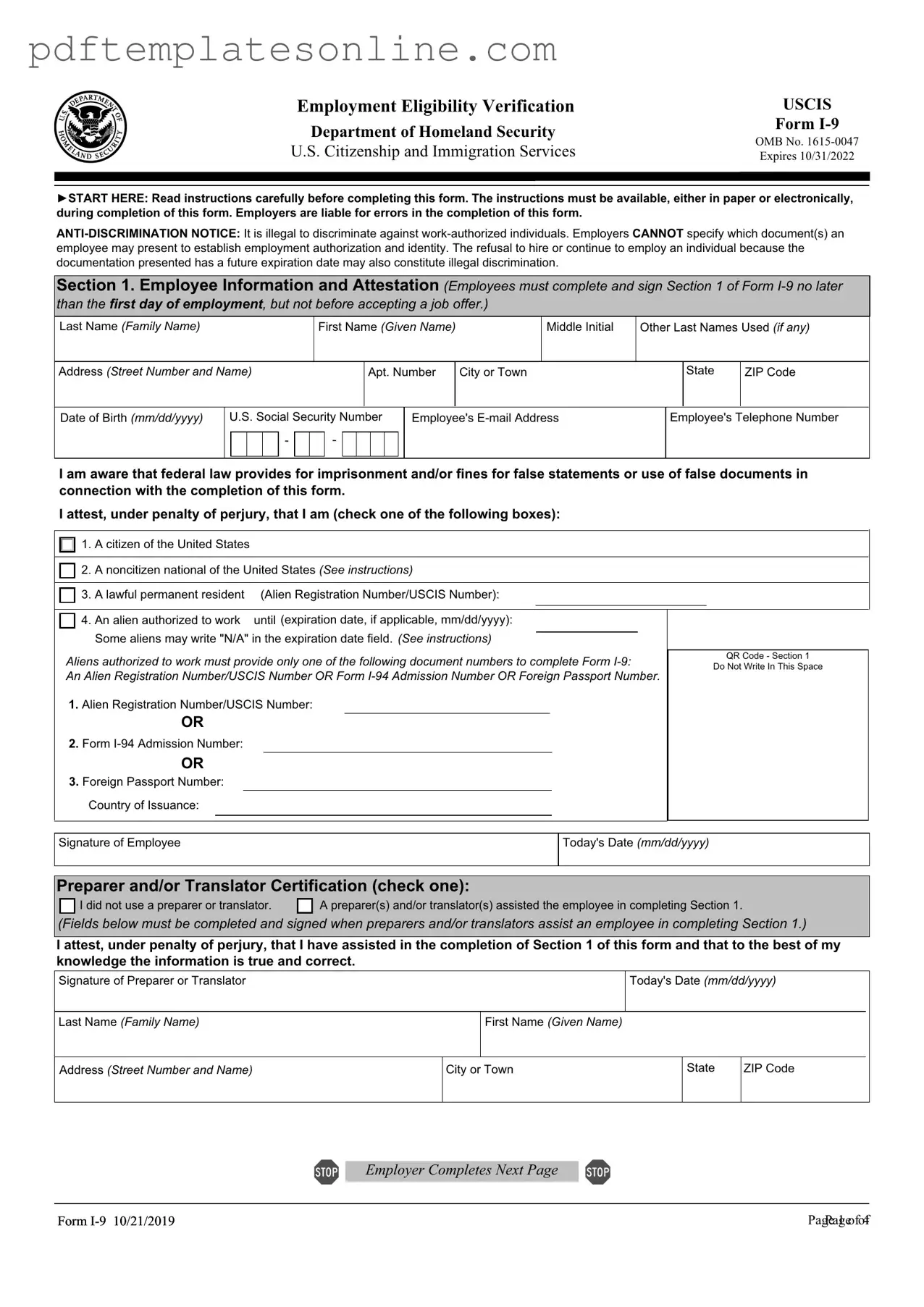Detailed Guide for Writing USCIS I-9
Filling out the USCIS I-9 form is an important step for employers and employees alike. Once you have the form ready, follow these steps to complete it accurately.
- Obtain the latest version of the I-9 form from the USCIS website.
- Fill out Section 1, providing your personal information. This includes your name, address, date of birth, and Social Security number. If you are not a citizen, indicate your immigration status.
- Sign and date Section 1 to certify that the information provided is true and correct.
- In Section 2, your employer will need to complete their part. They will examine your documents that establish your identity and employment eligibility.
- Provide the required documents to your employer. Acceptable documents are listed on the I-9 form itself. Make sure to bring original documents, not copies.
- Your employer will fill out the details of the documents you present in Section 2. This includes the document title, issuing authority, document number, and expiration date if applicable.
- Both you and your employer must sign and date the form in the appropriate sections.
- Keep the completed I-9 form on file as required by law. Your employer should retain it for a specific period.
After completing the form, ensure that all information is accurate and that both parties have signed it. This will help avoid any potential issues with employment eligibility verification in the future.
